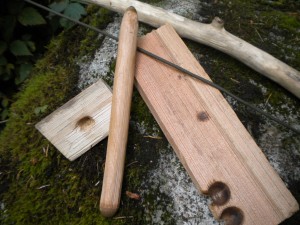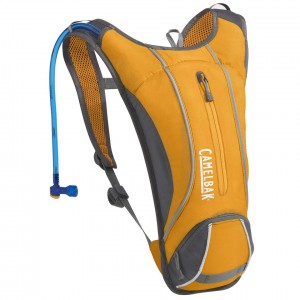
Here is my review of each component of the Bear Grylls Survival Tool from Gerber:
Pliers: The cutters are extremely solid. Whether you are stripping a wire or cranking down a loose nut it’s one of the most used items on this multi-tool. They are spring loaded and come pre-sharpened.
Wood Saw: The saw has a really aggressive profile. This seems to be the only tool that is as big as possible, and it needs to be. With a little elbow grease you can cut up some pretty sizable pieces of wood.
Scissors: It will cut paper, plastic, string, small ropes or paracord with ease. I think essentially it will cut anything you can fit in between its blades. (rocks or metal excluded)
File: What can I say…. It’s a file. On any prolonged stay in the wilderness one can offer up some of the finest manicure/pedicures on this side of Patagonia.
Serrated Blade: It can be useful when cutting through tendon on the hind quarters of a deer but you lose a little blade length because of it. It’s sharp out of the box and works well with the flint stick.
Small Flat Head: I use it on a daily basis. It is standard but I couldn’t get by without it.
Medium Flat Head: Although it is much less standard to include two sizes, I’m glad Gerber did. When it comes to standard hardware you are much more likely to find a larger slot than a smaller.
Pierce: This was very well designed. I was able to dispatch a can of its lid quickly to empty my mornings bacon grease with zero potentially dangerous slips.
Bottle Opener: I’m not sure of the validity of including this tool in modern society. I really have only used it to open my adult beverages. I don’t mind the inclusion on your everyday multi tool, but this is a SURVIVAL tool and I feel they could have come up with something more useful (gut hook or punch tool).
Philips Head: If you want to be picky it could be a size or two larger. (So you don’t strip screws) In all reality I use it either when I’m too lazy to get a real phillips head out of the tool box or if I just don’t have one on me. It saved me several months ago when my radiator hose blew off and all I needed was a phillips head to tighten down the hose clamp.
 1. Find tinder. Anything that is dry, fibrous, and will take a spark or “catch” and ignite should do. Pocket lint, feather down, dried mosses, and shredded plant fibers such as cedar bark are all good examples.
1. Find tinder. Anything that is dry, fibrous, and will take a spark or “catch” and ignite should do. Pocket lint, feather down, dried mosses, and shredded plant fibers such as cedar bark are all good examples. Wildfires are fast moving and unpredictable. In the recent years wildfires have become a real threat to areas that were once thought not prone. You can see the smoke from miles away, but your first clue that there’s a forest fire nearby is falling ash. Hopefully you will never be that close, but if you are, evasive action may be required.
Wildfires are fast moving and unpredictable. In the recent years wildfires have become a real threat to areas that were once thought not prone. You can see the smoke from miles away, but your first clue that there’s a forest fire nearby is falling ash. Hopefully you will never be that close, but if you are, evasive action may be required.

